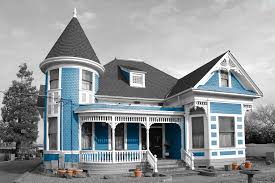Older homes have charm, character, and history—but they also come with unique risks that can make getting homeowners insurance more challenging. If you own or are buying a house built before 1950 (or even earlier), you may wonder:
Yes, but it may require special coverage, higher premiums, or a historic home policy.
In this guide, we’ll cover:
-
Why Insuring Old Homes is Different
-
Challenges of Insuring Older Houses
-
Types of Coverage Available
-
Best Insurance Companies for Older Homes
-
Ways to Lower Your Premiums
-
Tips for Getting Approved
Let’s dive in.
1. Why Insuring Old Homes is Different
Older homes (typically 50+ years old) present unique risks that standard homeowners insurance may not fully cover, such as:
Outdated electrical wiring (knob-and-tube, aluminum) → Higher fire risk
Aging plumbing (galvanized pipes, lead) → Water damage risk
Old roofing materials (wood shakes, slate) → Higher repair costs
Historical building codes → Expensive restoration requirements
Obsolete heating systems (oil tanks, coal chutes) → Liability hazards
Because of these risks, insurers may:
Charge higher premiums
Require a home inspection
Exclude certain perils (e.g., sewer backup)
Offer limited replacement cost coverage
2. Challenges of Insuring Older Homes
A. Higher Risk of Claims
-
Older homes are more prone to fire, water damage, and structural issues.
-
Insurers may see them as “high-risk” properties.
B. Replacement Cost vs. Actual Cash Value (ACV)
-
Standard policies often pay Actual Cash Value (ACV), which deducts depreciation.
-
Problem: A 100-year-old roof may only be valued at $500 when it costs $20,000 to replace.
-
Solution: Look for “Guaranteed Replacement Cost” coverage.
C. Historic Home Requirements
-
If your home is officially designated as historic, you may need a specialized policy.
-
Example: A Victorian-era home with original woodwork may require custom restoration in case of damage.
D. Limited Insurer Options
-
Some big-name insurers (e.g., State Farm, Allstate) may decline very old homes.
-
You may need a surplus lines insurer (non-standard market).
3. Types of Coverage for Older Homes
| Policy Type | Best For | Key Features |
|---|---|---|
| Standard HO-3 Policy | Moderately old homes (updated systems) | Covers fire, theft, liability |
| Dwelling Fire Policy (DP-1/DP-3) | Very old or vacant homes | Basic named-peril coverage |
| Modified Coverage (HO-8 Policy) | Historic or hard-to-insure homes | Pays repair costs (not full replacement) |
| Specialty Historic Home Insurance | Officially designated historic homes | Covers authentic restoration |
Key Takeaway: If your home is pre-1900 or has historic status, a HO-8 or specialty policy is often best.
ஆஹா கல்யாணம்
4. Best Insurance Companies for Older Homes
Nationwide
-
Offers “Heritage” policies for historic homes.
-
Covers original material restoration.
Chubb
-
High-end masterpiece policies for luxury historic homes.
-
Includes extended replacement cost.
Liberty Mutual
-
Flexible underwriting for older homes with updates.
Foremost (a Farmers subsidiary)
-
Specializes in hard-to-insure homes, including older properties.
American Modern (for HO-8 policies)
-
Good for limited replacement cost coverage.
Avoid: Some insurers (e.g., Lemonade, Hippo) may not cover pre-1950 homes.

5. Ways to Lower Your Premiums
A. Upgrade High-Risk Features
-
Replace knob-and-tube wiring with modern electrical systems.
-
Install new plumbing (PEX or copper).
-
Update the roof, HVAC, or foundation if needed.
B. Increase Your Deductible
-
A higher deductible (e.g., $2,500 vs. $1,000) can reduce premiums.
C. Bundle Policies
-
Combine home + auto insurance for discounts (e.g., State Farm, Allstate).
D. Get a Historic Home Discount
-
Some insurers offer discounts for preservation efforts.
E. Shop Around Annually
-
Older home insurance rates vary widely—compare quotes every few years.
6. Tips for Getting Approved
-
Get a Pre-Insurance Inspection
-
Proving your home is well-maintained helps with approval.
-
-
Document Renovations
-
Show receipts for updated wiring, plumbing, or roofing.
-
-
Work with an Independent Agent
-
They can find specialty insurers that accept older homes.
-
-
Consider a “Functional Replacement Cost” Policy
-
Pays to rebuild with modern materials (cheaper than full restoration).
-
-
Avoid Filing Small Claims
-
Too many claims can make an old home uninsurable.
-

Final Verdict: Can You Insure an Old House?
Yes, but you may need:
-
A specialized HO-8 or historic home policy
-
Upgrades to outdated systems
-
A higher budget for premiums
Difficult to insure if:
-
The home has major structural issues
-
It’s vacant or a fixer-upper
-
No insurer accepts original knob-and-tube wiring
Have you insured an old home? Share your experience in the comments!






